Asustek Computer Bundle
Who Really Owns ASUS?
Understanding the ownership structure of a tech giant like ASUS is crucial for investors and industry watchers alike. From its humble beginnings in Taiwan, ASUS has evolved into a global powerhouse, but who ultimately calls the shots? This exploration will unravel the intricate web of Asustek Computer SWOT Analysis ownership, revealing the key players and their influence.
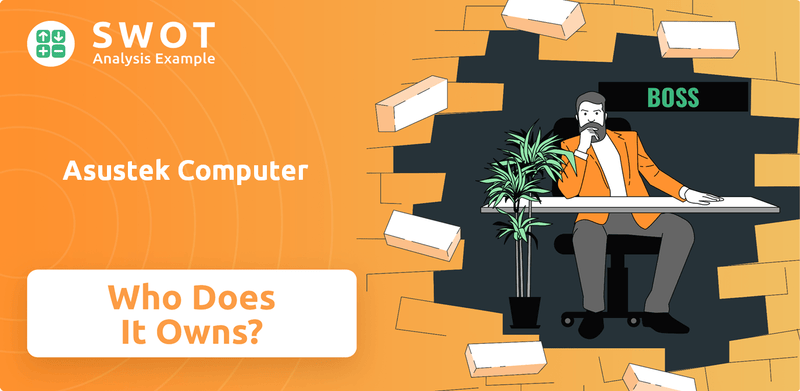
Delving into "Who owns Asus" unveils a fascinating story of growth and transformation. Knowing the "Asus parent company" and its ownership dynamics offers insights into strategic decisions, market positioning, and long-term vision. This analysis will examine the evolution of Asustek ownership, from its founding to its current status as a publicly traded company, including the impact of major shareholders and the role of its executives. We'll also explore the "Asus company history" and the location of "Asus headquarters" in relation to its ownership structure.
Who Founded Asustek Computer?
The story of Asustek Computer Inc. (Asus) began in 1989 in Taipei, Taiwan. The company's founders, a group of former Acer hardware engineers, shared a vision of creating an innovative technology company. This shared dream led to the establishment of what would become a global leader in the computer hardware industry.
The founding team consisted of Ted Hsu, M.T. Liao, Wayne Tsiah (also known as Wayne Hsieh), and T.H. Tung. Their initial focus was on the development and production of motherboards, a critical component of personal computers. This early strategic decision set the stage for the company's rapid growth and its eventual expansion into a wide range of products.
Within the first eight months, the engineers developed the Cache 386/33 and ISA 486/25 motherboards. These were used by industry leaders like IBM and ALR. This early success helped establish Taiwan as a hub for high-quality IT products.
A key early achievement for Asus was creating a motherboard prototype for the Intel 486 processor without direct access to the actual processor. This impressed Intel, leading to Asus receiving engineering samples ahead of its competitors. This early partnership was critical. The company's focus on innovation and strategic partnerships has been a cornerstone of its success. Learn more about the Revenue Streams & Business Model of Asustek Computer.
- Who founded Asustek Computer Inc: Ted Hsu, M.T. Liao, Wayne Tsiah, and T.H. Tung.
- When was Asustek Computer Inc established: 1989.
- Asus company history: The company started in Taipei, Taiwan, focusing on motherboards.
- Asus headquarters: Taipei, Taiwan.
Asustek Computer SWOT Analysis
- Complete SWOT Breakdown
- Fully Customizable
- Editable in Excel & Word
- Professional Formatting
- Investor-Ready Format
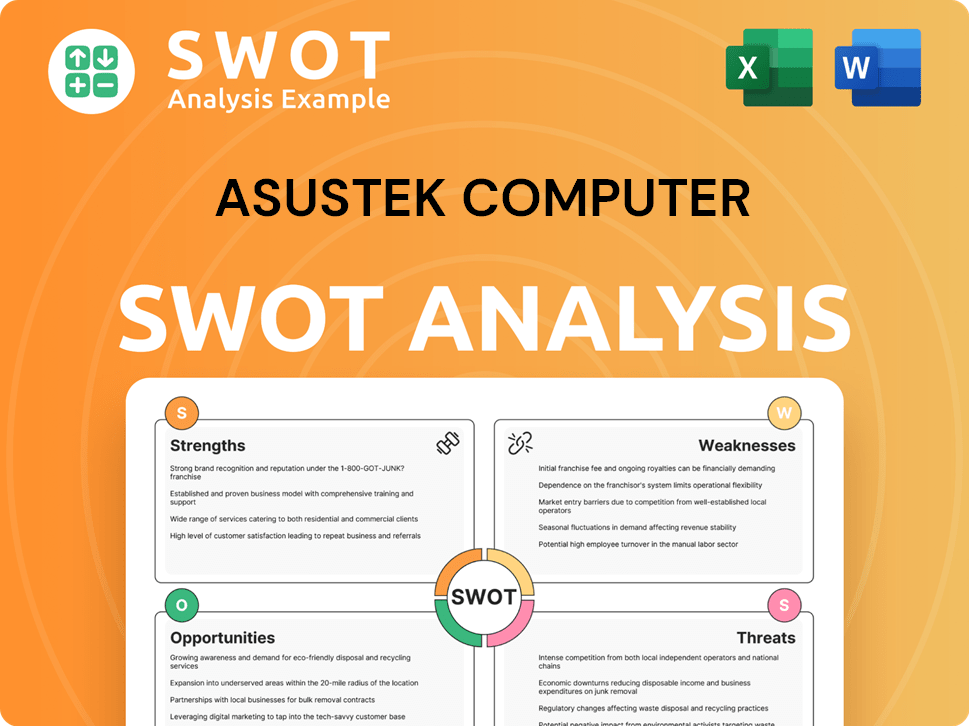
How Has Asustek Computer’s Ownership Changed Over Time?
The evolution of ownership for ASUSTeK Computer Inc., often referred to as ASUS, is marked by its transition to a publicly traded company. The initial public offering (IPO) on the Taiwan Stock Exchange (TWSE: 2357) was a pivotal moment. This move opened the company to a wider investor base, fundamentally altering its ownership structure. This shift enabled ASUS to access capital markets and broadened its shareholder base beyond the founding group.
As of May 14, 2025, ASUS shares were priced at 622.00 NTD each. The company's market capitalization reached $17.2 billion as of June 13, 2025, with approximately 743 million shares outstanding. This capitalization reflects the market's valuation of the company and is a key indicator of its financial health and investor confidence. The current ownership structure reveals a diverse group of stakeholders, each holding a significant portion of the company's shares.
| Ownership Category | Percentage of Shares | Number of Shares |
|---|---|---|
| General Public | 58.2% | 432,145,787 |
| Institutional Investors | 33.3% | 246,972,213 |
| Individual Insiders | 5.78% | 42,957,738 |
| Private Companies | 2.78% | 20,684,542 |
The largest shareholder group is the general public, holding a majority stake. Institutional investors also have a substantial presence, reflecting confidence from major financial entities. Individual insiders and private companies hold smaller, yet significant, portions of the shares. Chongtang Shi, the Chairman of the Board and Chief Branding Officer, is a key figure, owning 4.05% of the shares, which is a total of 30,093,638 shares. The company's financial performance, such as the NT$587.09 billion in revenue in 2024, and a 21.72% increase from 2023, alongside a 97.10% rise in earnings to NT$31.39 billion, further influences investor confidence and shareholding patterns. This data provides a clear picture of who owns ASUS and the dynamics of its shareholder base.
Understanding the ownership structure of ASUS is crucial for investors and stakeholders.
- The general public holds the largest share, indicating broad market participation.
- Institutional investors have a significant stake, reflecting confidence from major financial entities.
- Key executives like Chongtang Shi have considerable holdings, aligning their interests with the company's success.
- Financial performance, such as revenue and earnings growth in 2024, influences investor confidence.
- For more details on the company's history, consider reading this article about Asustek Computer Inc.
Asustek Computer PESTLE Analysis
- Covers All 6 PESTLE Categories
- No Research Needed – Save Hours of Work
- Built by Experts, Trusted by Consultants
- Instant Download, Ready to Use
- 100% Editable, Fully Customizable
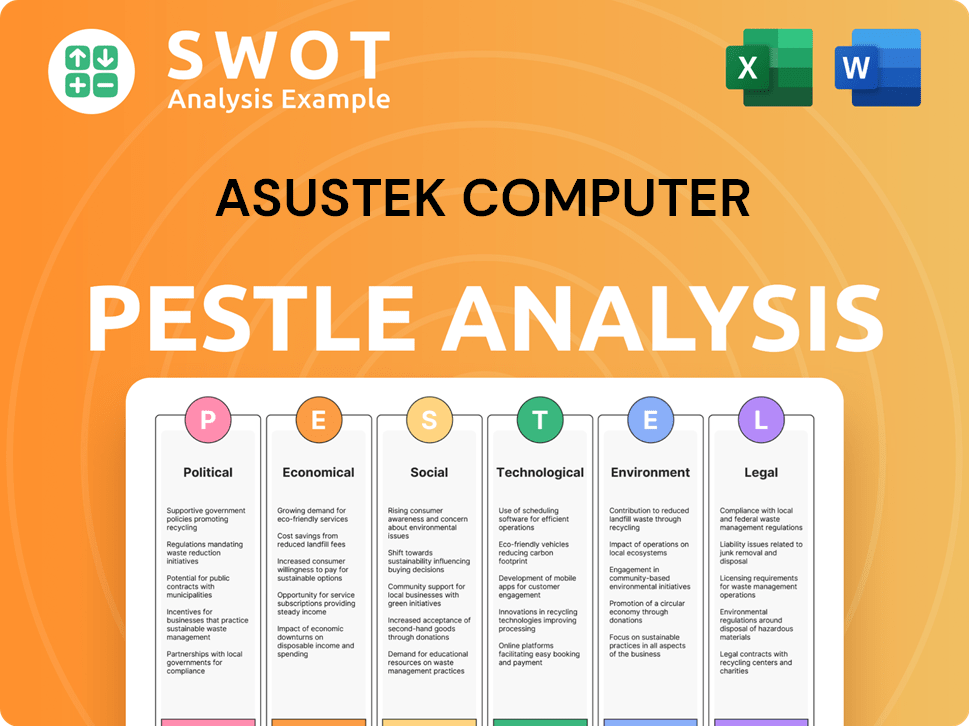
Who Sits on Asustek Computer’s Board?
The Board of Directors at ASUSTeK Computer Inc. oversees the company's strategic direction and governance. A detailed, up-to-date list of board members and their affiliations can be found in the company's annual reports. A key figure is Chairman and Chief Brand Officer, Jonney Shih. As of May 31, 2025, Chongtang Shi (likely Jonney Shih) holds a significant 4.05% of the company's shares, influencing the Asustek ownership structure.
The election of directors at ASUS happens during shareholder meetings using a single-ballot voting system. The process allows for cumulative voting, where shareholders can concentrate their votes to elect specific individuals. Independent and non-independent directors are elected separately but concurrently. The directors with the most votes are elected based on the number of available seats. Understanding the voting power at ASUS is key for anyone looking into the company's structure.
| Board Role | Key Figure | Shareholding (Approximate) |
|---|---|---|
| Chairman & Chief Brand Officer | Jonney Shih (Chongtang Shi) | 4.05% (as of May 31, 2025) |
| Director Election Process | Single-ballot voting, cumulative voting | One share equals one vote |
| Board Meeting Frequency | Quarterly, with extraordinary meetings as needed | Majority vote of attending directors required for resolutions |
The company's Rules of Procedure for Board Meetings outline the governance system, emphasizing the board's supervisory and management functions. Board meetings are convened quarterly, with extraordinary meetings called for urgent matters. Resolutions typically require a majority vote of attending directors and the attendance of a majority of directors. Independent directors are required to attend each meeting in person, and their opposition or reservations must be noted in the minutes. For more information about the competitive environment, you can explore the Competitors Landscape of Asustek Computer.
The board of directors at ASUS plays a vital role in the company's governance and strategy. Jonney Shih, the Chairman, is a key figure with significant shareholding. The voting structure generally follows a one-share-one-vote principle with cumulative voting for director elections.
- Jonney Shih holds a significant percentage of shares.
- Director elections use a single-ballot, cumulative voting system.
- Board meetings are held quarterly.
- Independent directors' attendance and opinions are formally recorded.
Asustek Computer Business Model Canvas
- Complete 9-Block Business Model Canvas
- Effortlessly Communicate Your Business Strategy
- Investor-Ready BMC Format
- 100% Editable and Customizable
- Clear and Structured Layout
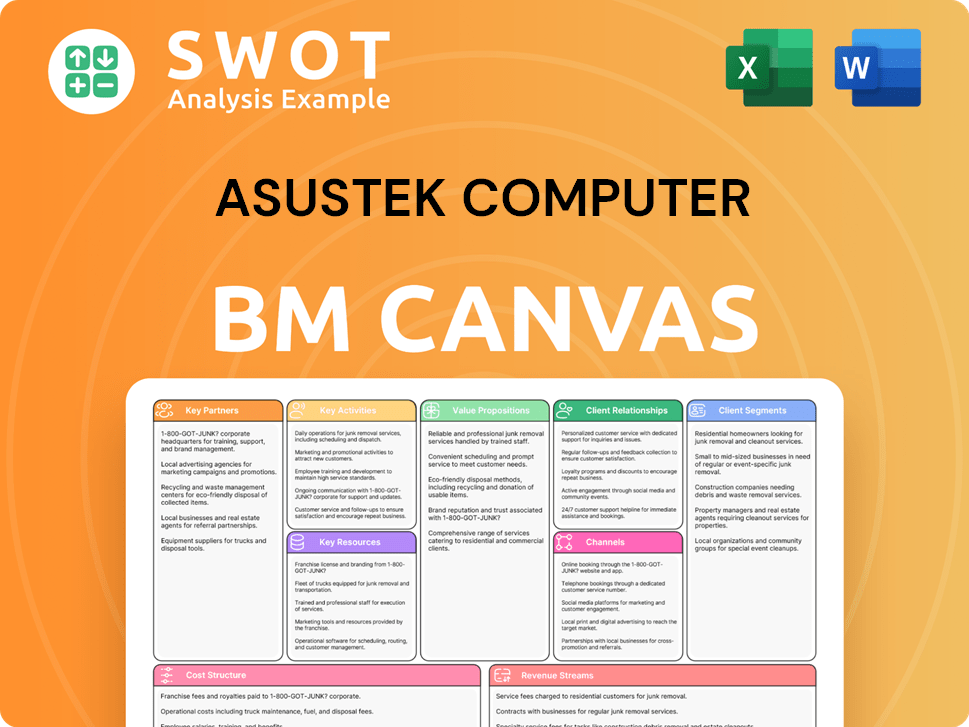
What Recent Changes Have Shaped Asustek Computer’s Ownership Landscape?
In the past few years, the financial performance of Asustek Computer Inc. has shown significant growth, which could influence its ownership profile. In 2024, the company saw a substantial increase in net revenue, reaching TWD 548.5 billion (approximately €17.53 billion or £14.53 billion), a 22% rise compared to the previous year. Operating profit surged by 229%, and net profit grew by 27%, reaching TWD 31 billion. This robust financial performance often attracts and retains institutional investors, potentially altering the dynamics of Asustek ownership.
Moreover, ASUS has been expanding its presence in emerging technology sectors. The AI server segment experienced remarkable growth, with a 100% year-over-year increase in the fourth quarter of 2024 compared to the same period in 2023. The company aims for a 30% market share in Copilot+ PCs by 2025 and plans to expand its AI server markets in Europe and the U.S. This strategic focus on AI PCs and servers is a key trend, with AI PCs expected to account for 35% of worldwide shipments in 2025. These strategic shifts and expansions in high-growth areas are likely to attract continued institutional investment, potentially leading to changes in who owns Asus.
ASUS's market position also reflects its growth trajectory. In Q2 2024, it ranked among the top five global PC vendors, experiencing the highest growth among the top players with a 17% annual increase, shipping 4.5 million units. The company's focus on returning value to shareholders is evident through its cash dividend proposal in March 2025, planning to distribute TWD 34 per share, approximately 80% of its profits. For more insights, you can read about the Growth Strategy of Asustek Computer.
ASUS reported a 22% increase in net revenue in 2024, reaching TWD 548.5 billion. Operating profit surged by 229%, and net profit rose by 27% to TWD 31 billion. The company's strong performance attracts and retains institutional investors.
ASUS is expanding in AI server markets, aiming for a 30% share in Copilot+ PCs by 2025. AI PCs are expected to account for 35% of worldwide shipments in 2025. This strategic move indicates a focus on future growth.
ASUS was among the top five global PC vendors in Q2 2024, with a 17% annual increase in shipments. In Q4 2024, ASUS again boasted the highest growth among top vendors with a 21.5% year-on-year increase in PC shipments. This demonstrates its strong market position.
The company plans to distribute TWD 34 per share as a cash dividend in March 2025, representing approximately 80% of its profits. This focus on shareholder returns is a key aspect of its financial strategy.
Asustek Computer Porter's Five Forces Analysis
- Covers All 5 Competitive Forces in Detail
- Structured for Consultants, Students, and Founders
- 100% Editable in Microsoft Word & Excel
- Instant Digital Download – Use Immediately
- Compatible with Mac & PC – Fully Unlocked
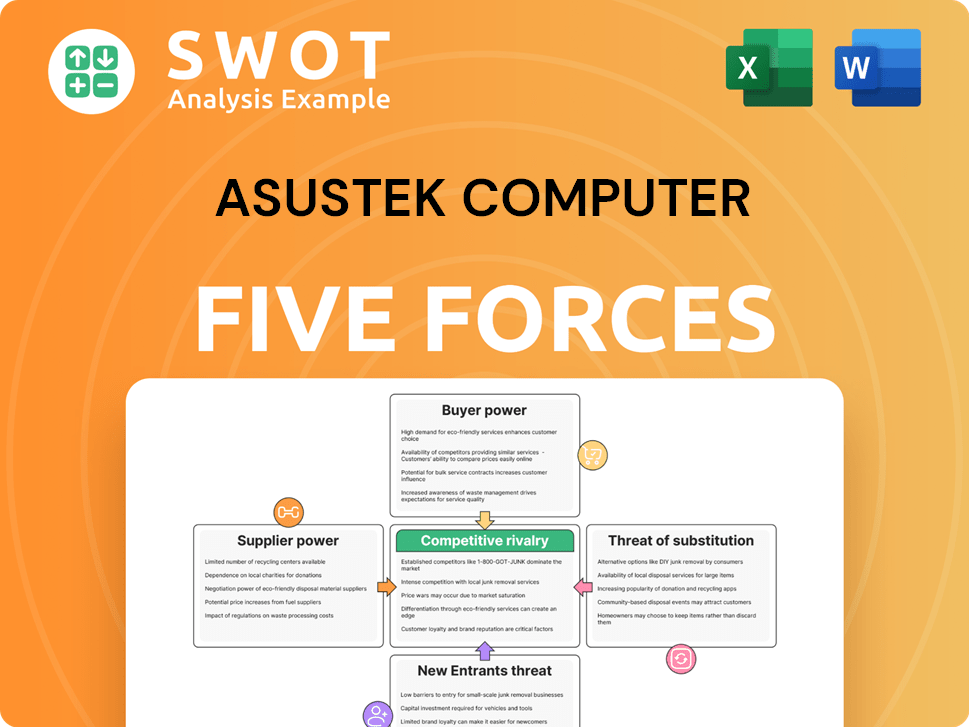
Related Blogs
- What are Mission Vision & Core Values of Asustek Computer Company?
- What is Competitive Landscape of Asustek Computer Company?
- What is Growth Strategy and Future Prospects of Asustek Computer Company?
- How Does Asustek Computer Company Work?
- What is Sales and Marketing Strategy of Asustek Computer Company?
- What is Brief History of Asustek Computer Company?
- What is Customer Demographics and Target Market of Asustek Computer Company?
Disclaimer
All information, articles, and product details provided on this website are for general informational and educational purposes only. We do not claim any ownership over, nor do we intend to infringe upon, any trademarks, copyrights, logos, brand names, or other intellectual property mentioned or depicted on this site. Such intellectual property remains the property of its respective owners, and any references here are made solely for identification or informational purposes, without implying any affiliation, endorsement, or partnership.
We make no representations or warranties, express or implied, regarding the accuracy, completeness, or suitability of any content or products presented. Nothing on this website should be construed as legal, tax, investment, financial, medical, or other professional advice. In addition, no part of this site—including articles or product references—constitutes a solicitation, recommendation, endorsement, advertisement, or offer to buy or sell any securities, franchises, or other financial instruments, particularly in jurisdictions where such activity would be unlawful.
All content is of a general nature and may not address the specific circumstances of any individual or entity. It is not a substitute for professional advice or services. Any actions you take based on the information provided here are strictly at your own risk. You accept full responsibility for any decisions or outcomes arising from your use of this website and agree to release us from any liability in connection with your use of, or reliance upon, the content or products found herein.